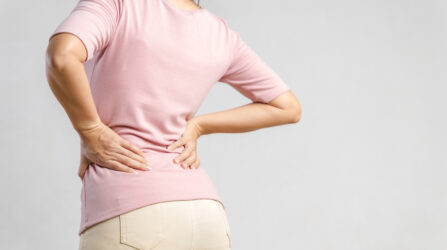Osteoporosis is a condition in which bone mass decreases and the internal structure of the bone changes, leading to bones becoming fragile and easily fractured, even from minor accidents.
For further information or Booking..
Nature of Bone Mass Accumulation and Loss
Human bones begin accumulating mass from birth and typically reach peak bone density around the age of 30. After this peak, bone mass gradually declines. Bone strength depends on both bone size and density, which are influenced by the mineral content—primarily calcium and phosphorus. Low mineral levels can result in weakened bones.
Bone Turnover
Bone turnover is a natural cycle in which bone tissue is continuously broken down and rebuilt, taking approximately 2–3 months per cycle. However, with age, bone resorption begins to outpace new bone formation. This imbalance is especially noticeable in women after menopause (around age 50), where the rate of bone loss is significantly higher than in men of the same age—by about 5 to 10 years. After this point, bone loss proceeds at a similar rate in both men and women.
Risk Factors for Osteoporosis
- Gender: Women are at greater risk than men.
- Age: Bone density begins to decline after age 30.
- Body Size: Individuals with a small, thin frame tend to have lower bone density.
- Diet: High consumption of caffeine (e.g., coffee, energy drinks) can accelerate bone loss.
- Lifestyle: Smoking and excessive alcohol consumption reduce bone density.
- Medications: Long-term use of certain medications, such as corticosteroids, increases the risk.
How to Determine if You Have Osteoporosis
According to the World Health Organization (WHO), osteoporosis is diagnosed by measuring bone mineral density (BMD) using Dual-energy X-ray Absorptiometry (DEXA), typically available at major medical centers. The results are given as a T-score:
- T-score ≥ -1.0: Normal
- T-score between -1.0 and -2.5: Osteopenia (low bone density)
- T-score ≤ -2.5: Osteoporosis
The lower the T-score, the greater the risk of fracture. However, fracture risk also depends on other clinical factors. Physicians take these into account along with bone density to determine appropriate treatment.
Risk Assessment and Treatment Considerations
The FRAX tool, developed by WHO, helps assess a patient’s 10-year risk of fracture by evaluating:
- Age, gender, height, weight
- Smoking and alcohol use
- Use of steroids
- History of fractures
- Family history of hip fracture
- Underlying conditions such as diabetes, hyperthyroidism, and rheumatoid arthritis
Combined with bone density (T-score), FRAX provides a more accurate risk estimate and assists physicians in selecting the most appropriate treatment strategy.
Painless but Dangerous: Osteoporosis Symptoms
Osteoporosis is often referred to as a “silent disease” because it causes no symptoms until a fracture occurs. Even minimal trauma can result in fractures, especially in the wrist, hip, and spine. In older adults, spinal fractures can cause back pain or a stooped posture even with minor impacts.
Diagnosis of Osteoporosis
- Bone Density Scan (DEXA): Measures bone density at key fracture sites such as the wrist, spine, and hip, and compares it to standard reference values.
- Biochemical Bone Markers: Blood tests assess the balance between bone formation and resorption. A predominance of resorption over formation leads to thinner, more fragile bones.
Prevention and Treatment of Osteoporosis
Non-Pharmacological Management:
- Adequate Calcium Intake: Include calcium-rich foods like milk, yogurt, cheese, small fish, dried shrimp, shrimp paste, kale, moringa leaves, sesbania flowers, tofu, red beans, and black sesame seeds.
- Weight-Bearing Exercise: Engage in activities like walking, jogging, Tai Chi, or dancing at least 2–3 times per week for 30 minutes per session.
- Lifestyle Modification: Avoid smoking, limit alcohol, reduce caffeine intake (tea, coffee), and avoid unnecessary steroid use.
Pharmacological Treatment:
- Calcium and Vitamin D supplements
- Hormone replacement therapy
- Calcitonin
- Bisphosphonates





















